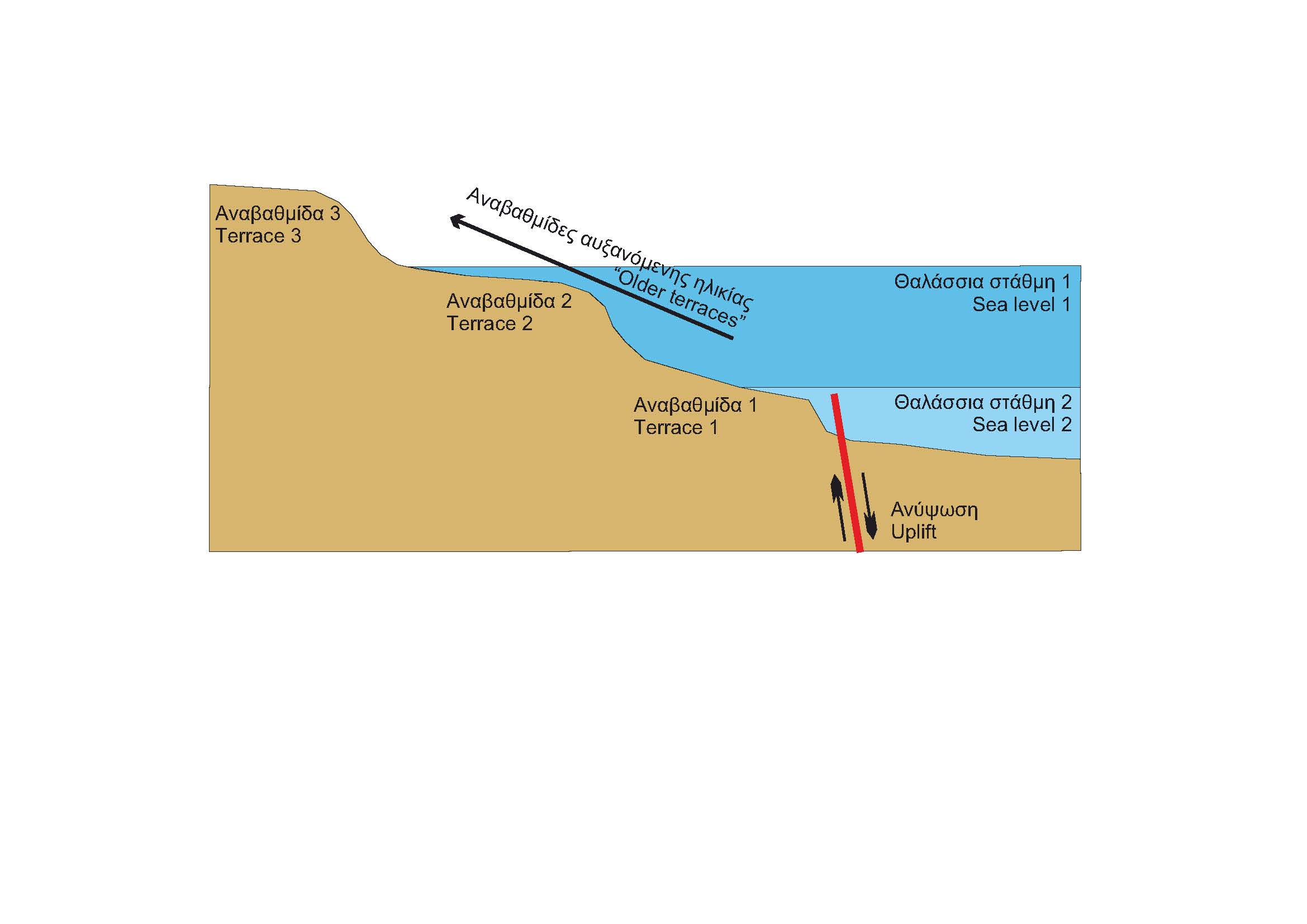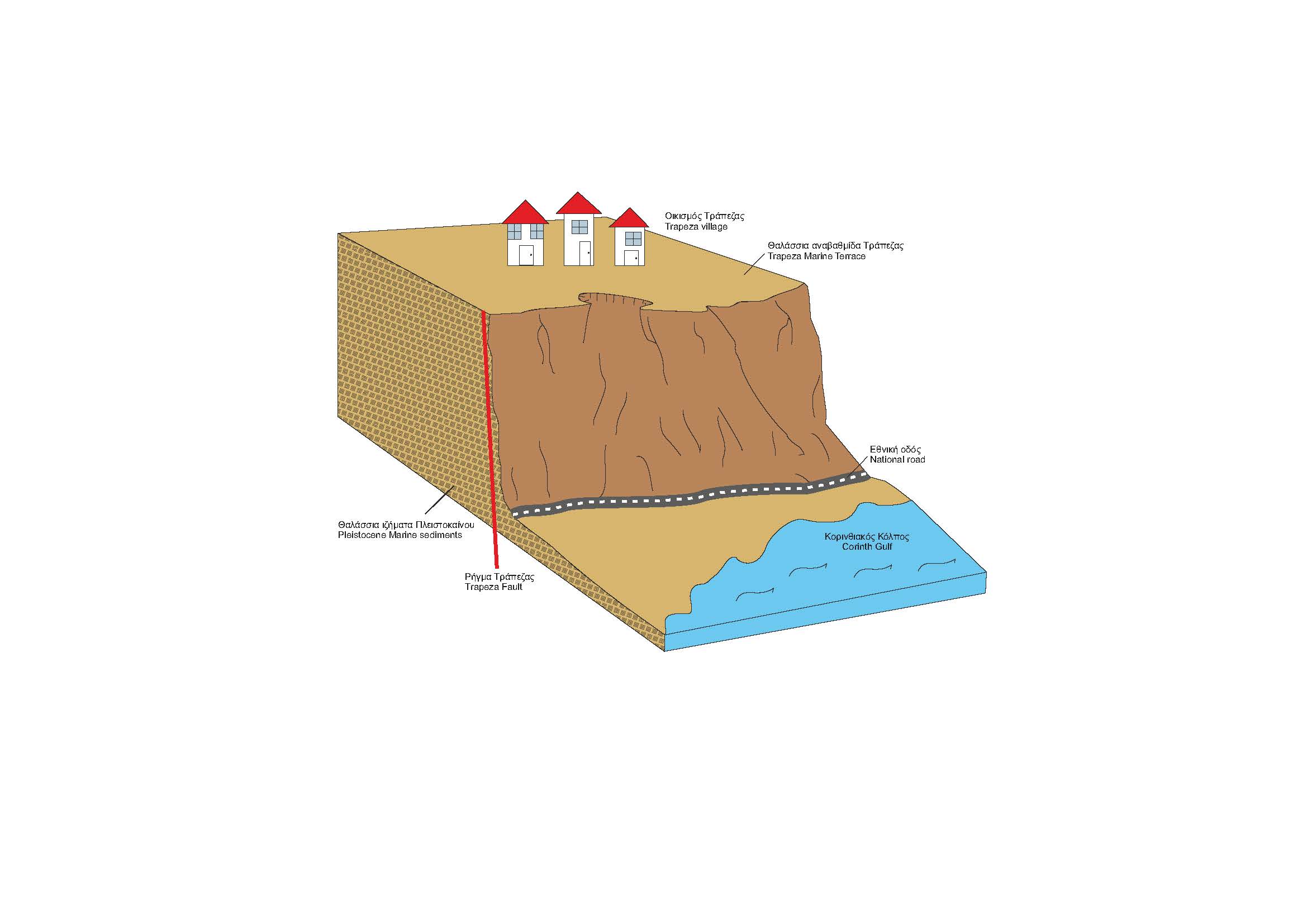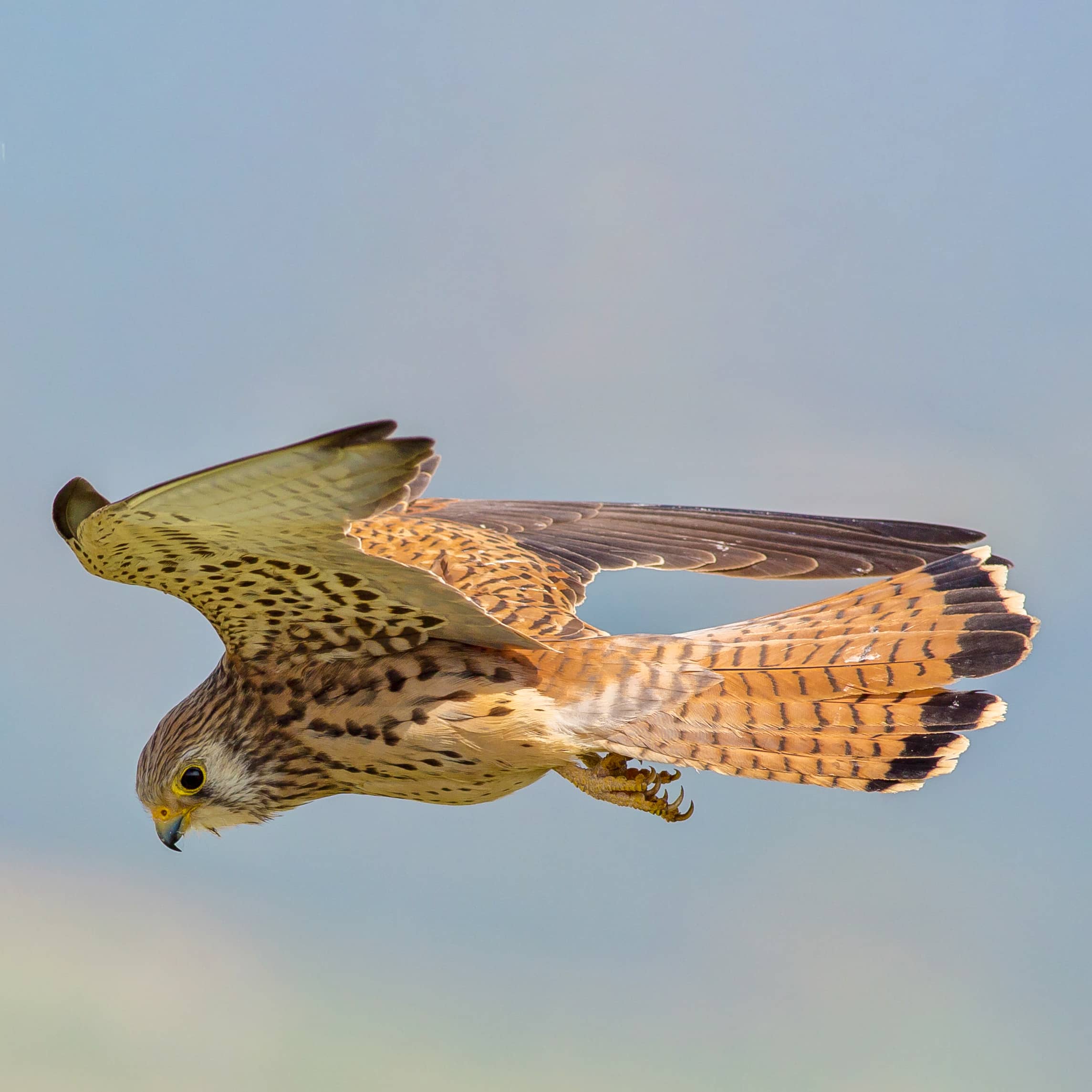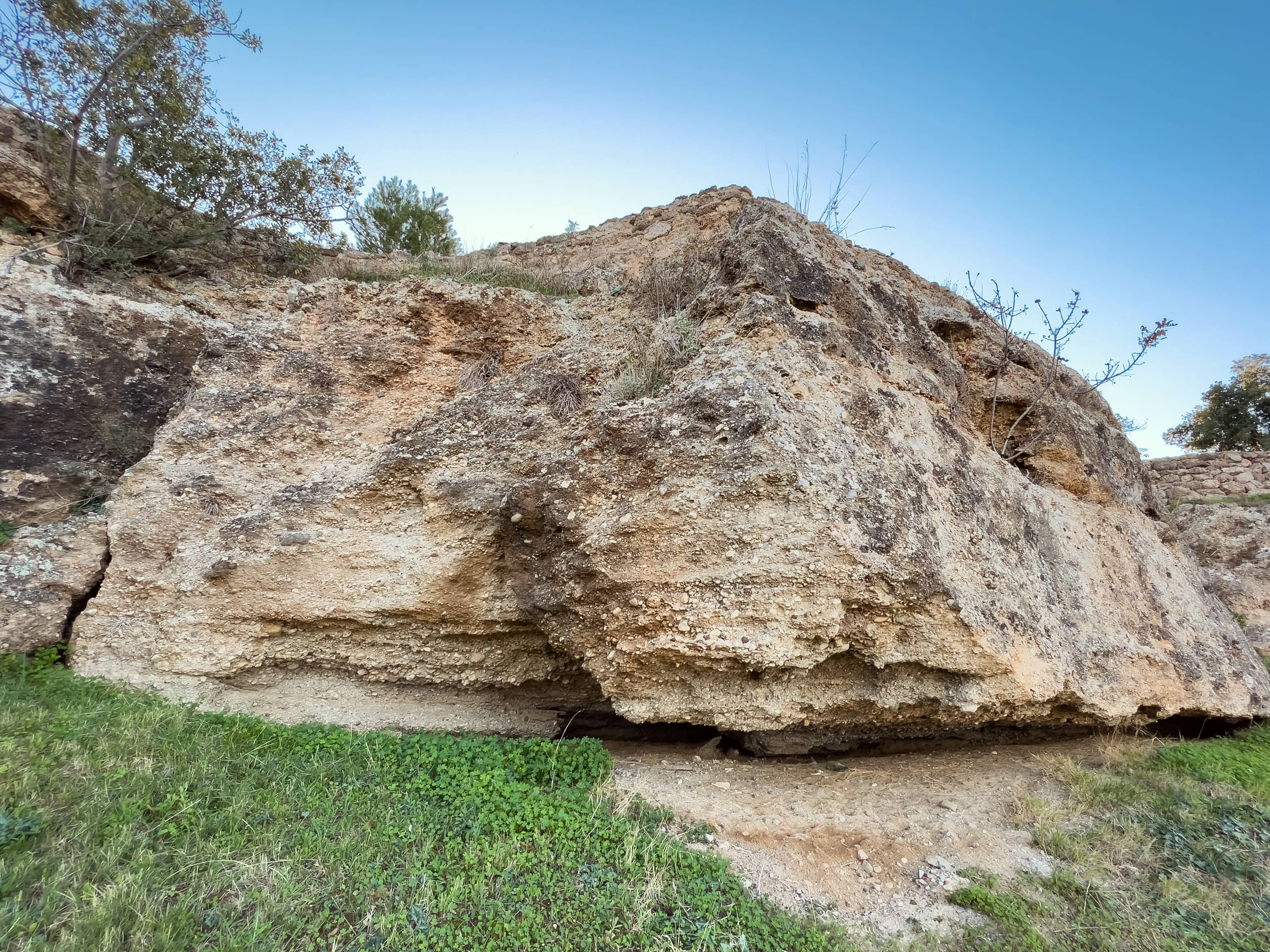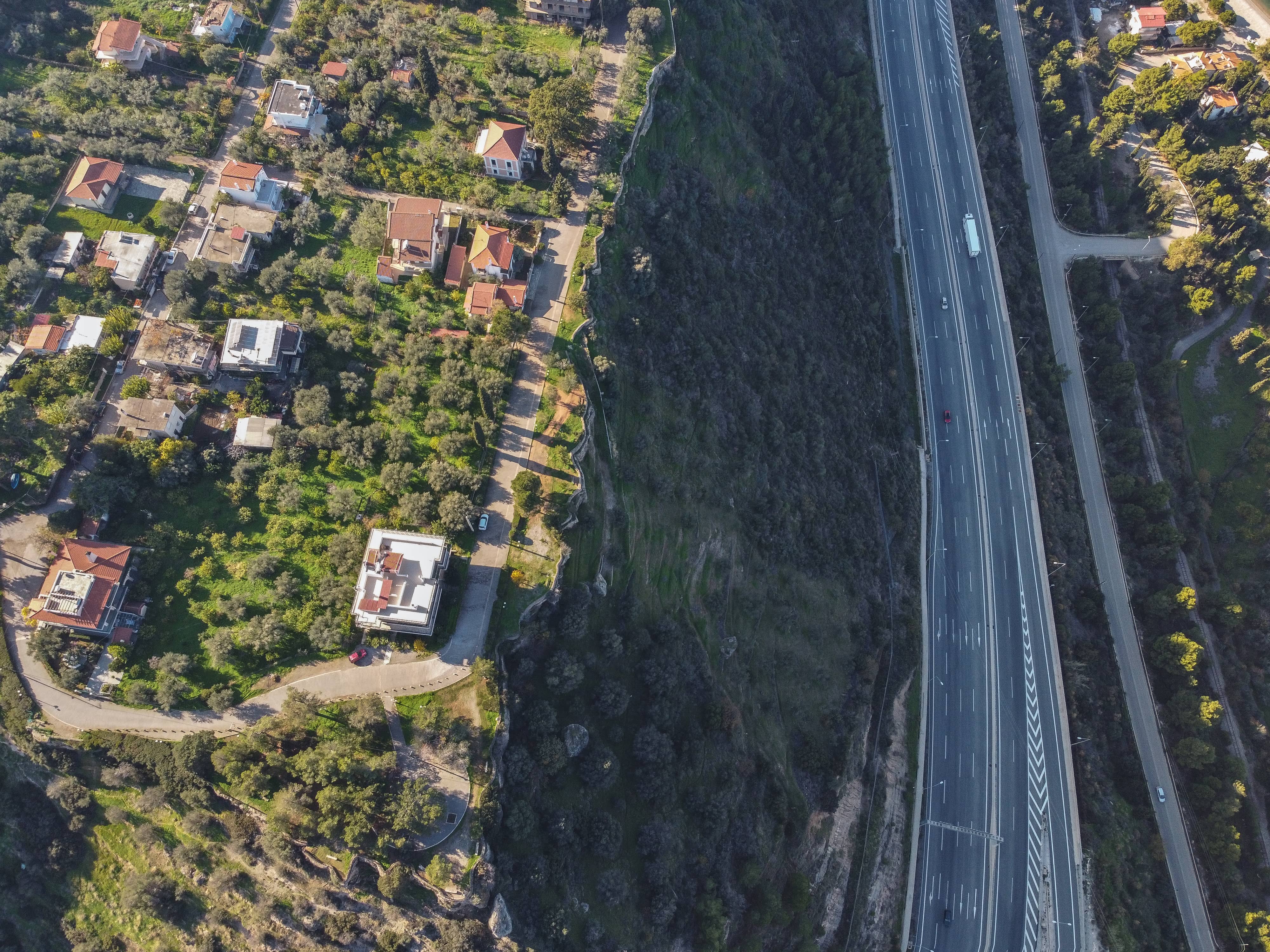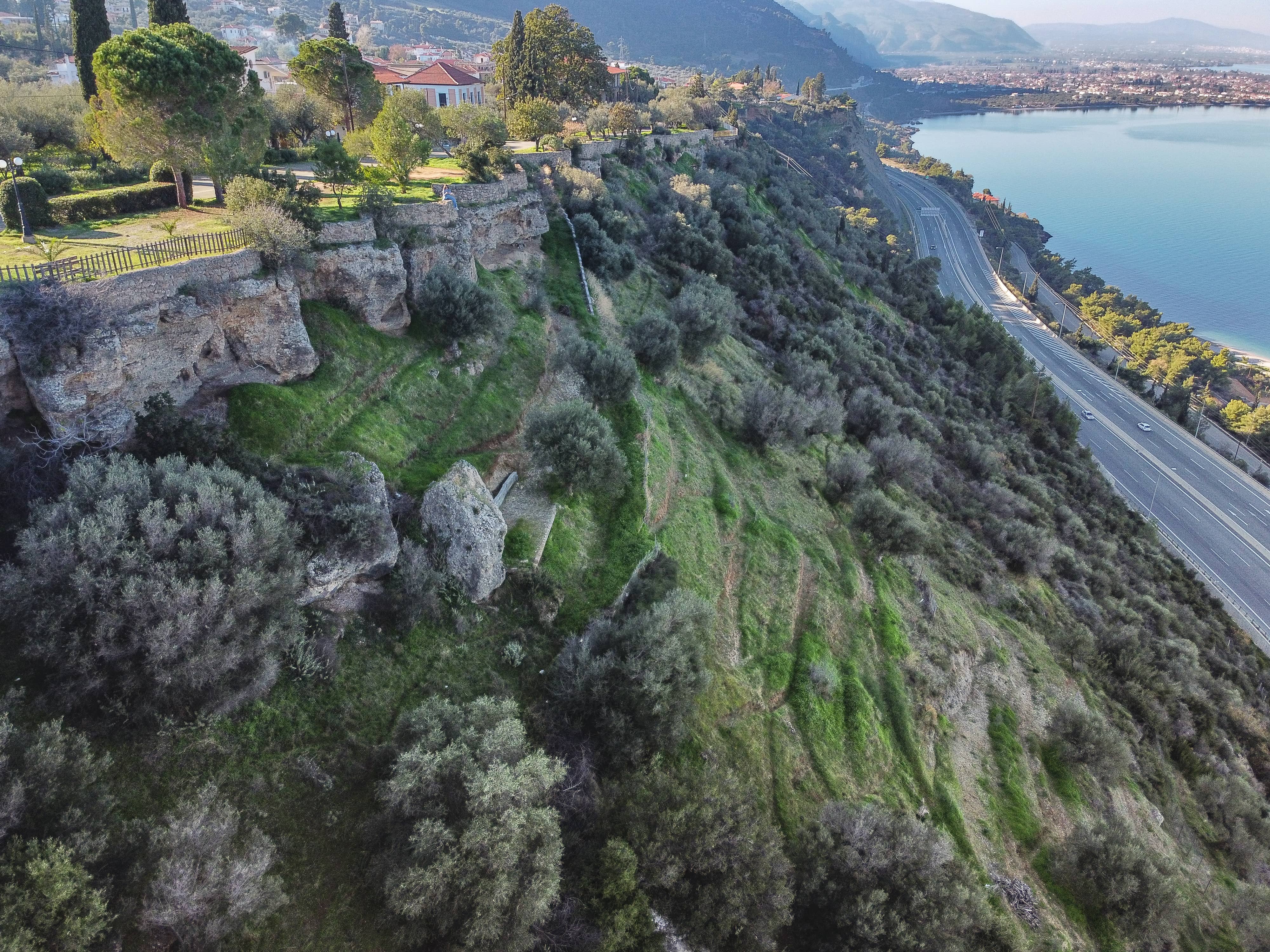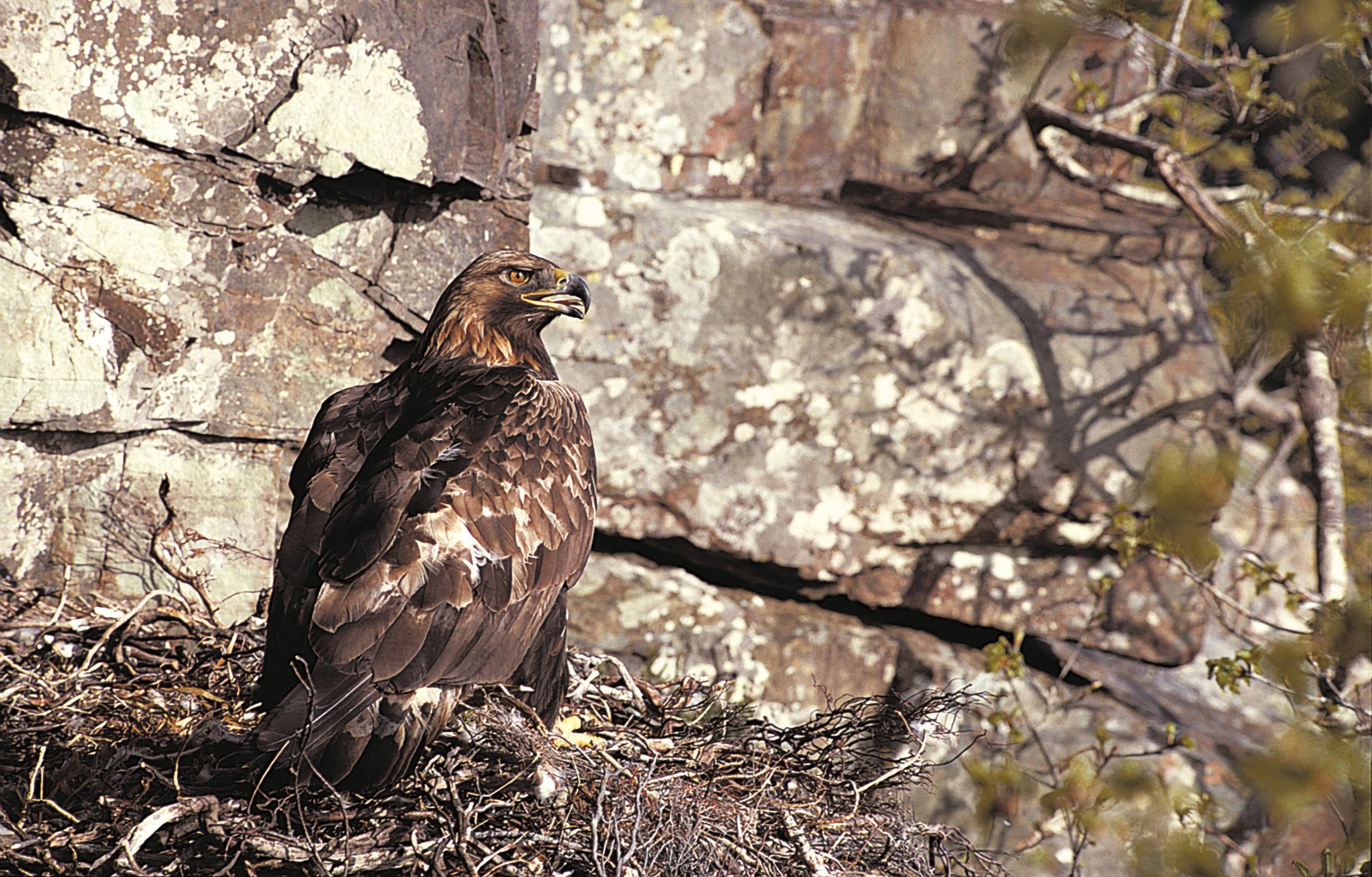THE MARINE STEPS AND MOTHER EARTH
The picturesque village Trapeza is built on a flat terrain at 100m altitude, just above the Corinth Gulf Sea. This special geomorphologic site consists of a marine terrace. South of Trapeza, lies the Monastery of the Holy Trinity, built on the ruins of the ancient temple dedicated to goddess Earth, from which a conical structure from the Mycenaean era has been preserved, and which was converted into a Christian church.
Geodiversity
How did this terrace form? During an interglacial period at the Middle Pleistocene (0.8-0.126 million years), when the sea level was high, the rocks that make up the Trapeza terrace were deposited. During the corresponding glacial period, the sea level dropped and the terrace was revealed and uplifted due to tectonism. This process was repeated several times forming a series of marine terraces located at gradually higher altitudes. The terraces in the surrounding area, lithologically, they consist alternations of sand and conglomerates and have a maximum thickness of 60m. The most characteristic appearance is the one on which the village of Trapeza is built, at an altitude of 140m.
The marine environment in which the Trapeza rocks were deposited, was confirmed by the identification in the sediments of fossilized organisms that lived in shallow-coastal environments such as mollusks (shells), foraminifera and ostracods.
Biodiversity
The Geosite is located near the Protected Area “FARANGI VOURAIKOU” (GR2320003) of the Natura 2000 network, which is designated as Special Area of Conservation (SAC) and near the Special Protection Area (SPA) for avifauna “OROS CHELMOS (AROANIA)-FARANGI VOURAIKOU KAI PERIOCHI KALAVRYTON” (GR2320013). The avifauna of the area is of great interest and includes birds of prey such as the Golden Eagle (Aquila chrysaetos), and the Eurasian eagle-owl (Bubo bubo).

